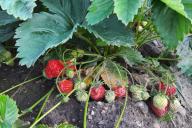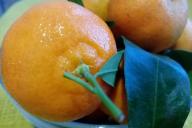If you don't like fruits, then you might try replacing them with fruit juices - but it's not always a good idea.
While some fruit juices can actually have vitamins, they lack other things that whole fruits have.
Here are a few reasons why you can't replace fruits with juices.
Missing Fiber
Fiber is like the helpful part of the fruit that's great for your tummy.
It keeps your digestion working well, makes you feel full, and helps keep your blood sugar steady.

When you turn fruit into juice, the fiber often gets left behind, and that's not so good because it's one of the best things in fruits.
Added Sugar
Sometimes, fruit juices have extra sugar added to make them sweeter. This extra sugar can be a bit tricky.
It's not the natural sugar that's in the fruit; it's extra sugar that's not very healthy.
It can lead to things like gaining extra weight and causing trouble for your teeth.
Calories and Portion Control
It takes a lot of fruit to make just a little glass of juice. That means the juice can have lots of calories in it.
When you eat whole fruits, they have water and fiber, which makes you feel full.
But with juice, you might not realize how many calories you're sipping up, and that can lead to eating too much without even noticing.
Nutrient Loss
Sometimes, the process of turning fruit into juice can make it lose some of its good stuff, like vitamins and minerals.
Whole fruits give you these nutrients in a natural and balanced way.
Conclusion
So, it's a good plan to keep whole fruits in your diet because they have the fantastic fiber, nutrients, and fullness that you can't get from fruit juices.
Juice is okay now and then, but don't forget to enjoy those whole fruits for a healthier and more balanced diet.
They're like nature's little nutrition packages!








